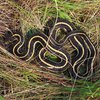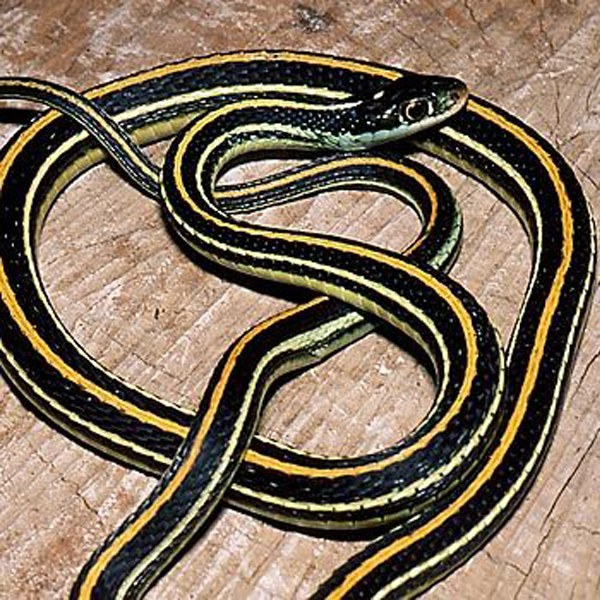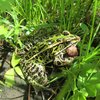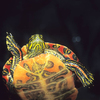Herps

Painted turtles are often seen basking on logs in the river.
Many of the animals that live in the river's riparian buffer are harder to find. Water quality is essential to sustain animals that rely on aquatic habitats for food and reproduction. Many animals spend their whole lives in the river, or within the riparian buffer under rocks and underground.
Amphibians and reptiles (collectively known as herps) can be found in many different habitat types and (with some exceptions) spend much of their time in and around water. Some species use different habitats at different times of the year. Some turtles, for example, spend most of their time in the water, but must move to land to lay eggs.
Learn about Friends' projects to create habitat for turtles.
Please email your wildlife questions, stories, or images to wildlife@chicagoriver.org.

A tiger salamander has spots to camouflage itself against the forest floor.
Amphibians and reptiles are both important members of aquatic and terrestrial ecosystems. Both groups serve as both predators and prey, and species that inhabit both ecosystems serve to transfer energy between the two systems.
Reptiles and amphibians do not regulate their own body temperatures internally as mammals and birds do. They have ways to stay warm such as basking in the sun, and by hibernating underground or burrowing into the mud to survive the winter.
The University of Illinois Extension has a comprehensive guide for Illinois reptiles and amphibians. These shy creatures are seldom seen, but almost always there. Listen for frogs calling in the spring. Some common reptiles and amphibians are highlighted below.









- American toad (Anaxyrus americanus)
- Blue-spotted salamander (Ambystoma laterale)
- Bullfrog (Rana catesbeiana)
- Common garter snake (Thamnophis sirtalis)
- Common snapping turtle (Chelydra serpentina)
- Eastern ribbon snake (Thamnophis sauritus)
- Northern leopard frog (Rana pipiens)
- Painted turtle (Chrysemys picta)
- Pond "red-eared" slider (Trachemys scripta)
Other resources:
- Ecology of the Chicago Region: Amphibians and Reptiles
- Common Frogs and Toads of the Chicago Region
- Amphibians and Reptiles of the Calumet Region
- River Life Stories: American toad, Blanding's turtle, blue-spotted salamander, common garter snake, common snapping turtle, eastern painted turtle, Massasauga rattlesnake, northern green frog, and northern watersnake

